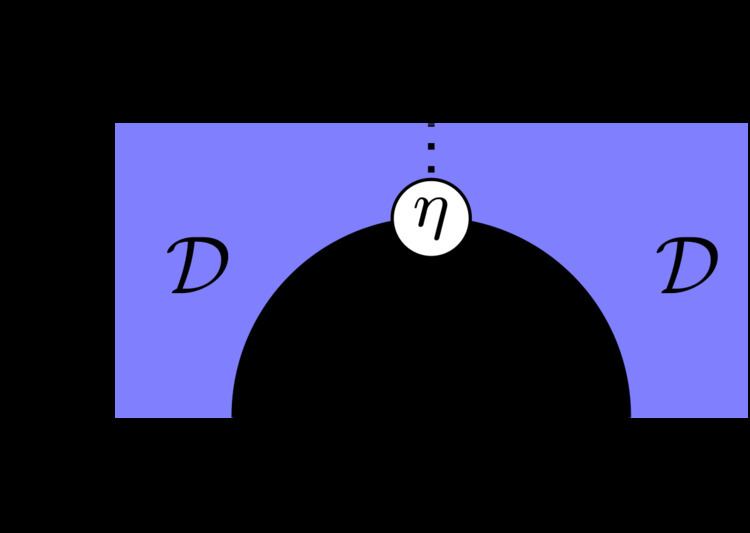 | ||
In category theory, string diagrams are a way of representing 2-cells in 2-categories.
Contents
Definition
The idea is to represent structures of dimension d by structures of dimension 2-d, using the Poincaré duality. Thus,
The parallel composition of 2-cells corresponds to the horizontal juxtaposition of diagrams and the sequential composition to the vertical juxtaposition of diagrams.
Example
Consider an adjunction
The string corresponding to the identity functor is drawn as a dotted line and can be omitted. The definition of an adjunction requires the following equalities:
The first one is depicted as
Other diagrammatic languages
Monoidal categories can also be pictured this way since a strict monoidal category can be seen as a 2-category with only one object (there will therefore be only one type of plane) and Mac Lane's strictness theorem states that any monoidal category is monoidally equivalent to a strict one. The graphical language of string diagrams for monoidal categories may be extended to represent expressions in categories with other structure, such as symmetric monoidal categories, dagger categories, and is related to geometric presentations for braided monoidal categories and ribbon categories.
